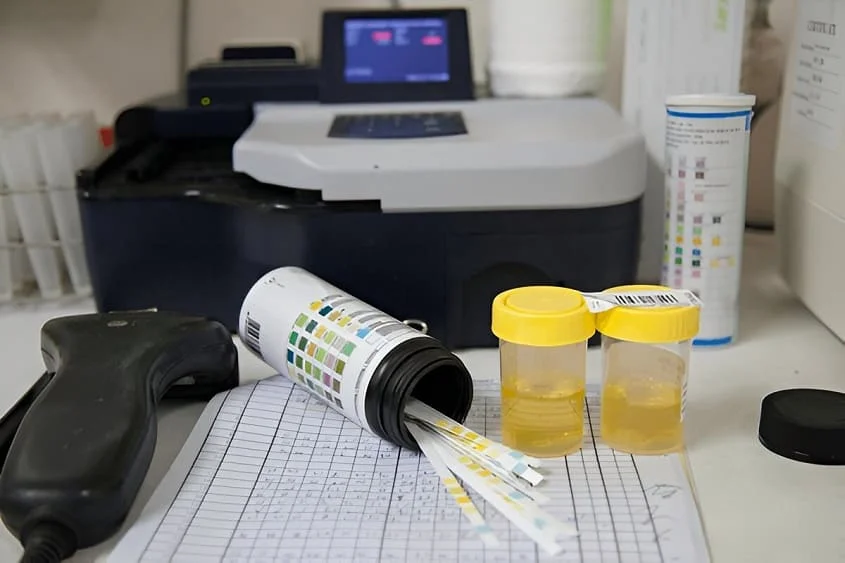How Often Should Urine Drug Tests Be Conducted for Effective Screening
- Updated on: Feb 14, 2025
- 3 min Read
By
- Published on Feb 14, 2025

Finding the right balance for urine drug testing frequency is key to maintaining an effective screening process. Factors such as the type of substance abuse and the risk level of the individual play a significant role in determining how often tests should be conducted. For many individuals exposed to higher risks, conducting urine drug tests at least once a month can provide an efficient balance between monitoring and privacy.
The choice of urine drug testing also hinges on the purpose. Routine tests are often employed in workplaces or clinics dealing with substance abuse. This approach can help detect any substance misuse over a certain period before it escalates into more serious issues. The increased concentration of drugs in urine makes it a popular choice for many settings that require accuracy and longer detection windows.
It’s imperative to consider the optimal frequency that will not only help detect drug use effectively but will also respect the individual’s dignity. Striking this balance can lead to a more trustworthy environment for both parties involved.
Principles of Urine Drug Testing
Understanding the principles of urine drug testing is essential for effective screening. You’ll learn about the scientific methods behind testing and how to interpret the results accurately.
The Science Behind Drug Testing
Urine drug testing uses scientific methods to detect substances in the body. These tests typically use immunoassay techniques for initial screening. Immunoassays detect drugs by recognising drug antibodies. They are fast and cost-effective but may need confirmatory testing.
Gas chromatography-mass spectrometry (GC-MS) is a common confirmatory test. It provides more precise results by separating compounds based on their mass and charge. Factors like the pH and specific gravity of the urine can affect the test’s reliability. False positives and false-negative results may occur, highlighting the importance of accurate method selection.
Tampering and substitution can compromise test results. To prevent this, some tests measure urine creatinine levels, as they indicate urine dilution. It’s vital to consider the detection window, which varies for different drugs, affecting when they can be identified in a sample.
Interpreting Test Results
Proper interpretation of urine drug tests requires attention to detail. Consider the test type, the substance involved, and its pharmacokinetics. Determining substance presence isn’t just about test results; clinical signs and the person’s medication history play a role. Confirmatory tests like GC-MS help verify initial immunoassays findings.
False positives can happen due to cross-reactivity with other substances. The Substance Abuse and Mental Health Services Administration provides clinical guidelines to help you interpret results. It’s essential to understand the duration of detectability of drugs, as different drugs remain in the body for different times.
Using a professional-grade urine drug test kit can ensure that the tests you administer are accurate and fast.
Optimal Frequency for Various Contexts
Urine drug tests should be planned based on the setting, like workplaces or clinical environments. Each context requires a different approach to balance effectiveness and resources.
Workplace Drug Testing
In workplace settings, urine drug testing can be conducted randomly or at regular intervals to deter illicit substance use among employees. Random testing is often effective as employees cannot predict when they will be tested, reducing attempts at dilution or adulteration. Testing is typically aimed at detecting substances such as cannabis, cocaine, and amphetamines.
The choice of frequency can depend on the industry and risk level. High-risk industries might require more frequent testing, every month or quarterly. Additionally, testing around events like hiring or after accidents can help gauge employee responsibility and safety.
Clinical Drug Monitoring
In clinical settings, especially for patients on opioid therapy or pain management, urine drug testing can help monitor adherence and detect misuse. Patients with conditions like opioid use disorder or chronic pain might need more frequent testing, tailored to their treatment plans.
Weekly or biweekly tests may be appropriate for patients on medications like methadone, buprenorphine, or opiates. This ensures that those running out of medication are not resorting to other substances. Monitoring substances such as benzodiazepines, morphine, or codeine is crucial to avoid complications like opiate abuse. By adjusting the frequency based on patient behaviour, clinicians can better detect issues like single use or chronic heavy use, helping to guide more effective treatment plans.
Conclusion
Conducting urine drug tests at appropriate intervals is important for effective screening. Regular testing helps detect drug use and supports treatment plans.
A mix of random and scheduled testing can ensure accurate results. Testing frequency depends on individual circumstances, including medical history and risk factors.
Using reliable testing methods and being aware of possible false positives is essential for making informed decisions.










